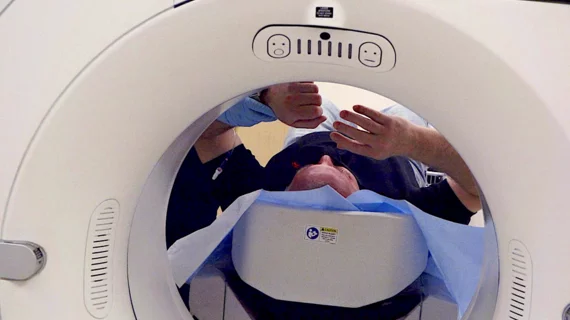New recommendations highlight the importance of CCTA when treating acute chest pain in the ED
Coronary computed tomographic angiography (CCTA) should be the go-to imaging option when treating most emergency department patients who present with acute chest pain (ACP), according to new recommendations published by the Society of Cardiovascular Computed Tomography (SCCT).
The new document, published in full in the Journal of Cardiovascular Computed Tomography, is based on data from eight different randomized controlled trials and five meta-analyses.[1] The American College of Radiology (ACR) and North American Society for Cardiovascular Imaging (NASCI) both endorsed the SCCT’s recommendations.
“This document serves as a framework for hospitals and emergency departments looking to implement and expand their CCTA programs,” radiologist Christopher Maroules, MD, the document’s lead author, said in a prepared statement. “With the detailed operational guidelines and best practices outlined in this document, physicians and administrators will be equipped to leverage the maximum value of this pathway, improving health outcomes for their patients, decompressing busy emergency rooms and lowering healthcare costs.”
CCTA has continued to gain momentum as a first-line treatment option since the American Heart Association (AHA) and American College of Cardiology (ACC) released their 2021 chest pain guidelines, which gave the modality a new 1A indication for evaluating stable and acute chest pain.[2]
“We believe in our community this is long overdue,” Eric Williamson, MD, 2021-2022 SCCT president, said in a recent interview with Cardiovascular Business. “But it is nice to see the broader medical community of medical care acknowledging and understanding the strengths of this technology.”
Those 2021 guidelines highlighted the importance of shared decision-making, which is also a key component of the SCCT’s latest recommendations.
“Once CCTA is deemed appropriate, shared decision-making between the clinician and patient is encouraged to review pros and cons of CCTA and to improve understanding and facilitate risk communication,” according to the document. “Alternative diagnostic strategies should be discussed, including no further testing, observation and/or functional testing, if available.”
Additional coverage of the 2021 chest pain guidelines is available here and here.

